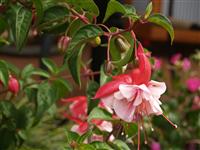
Set up Your Own Fuchsia Nursery
Learn everything you ever wanted to know about fuchsias, from soil management and feeding to pruning and propagation. Learn how fuchsias are classified into several major groups, the characteristics of those groups and how/where to grow different types to achieve the best results.